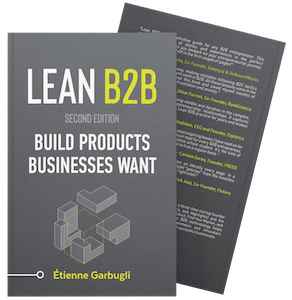How do you uncover unmet needs in the market?
How do you discover what your customers want?
How do you decide what to build?
How do you find out what businesses will pay for?
Does it start at the drawing board?
Is it about listing thoughts and ideas in Excel?
Throwing spaghetti at the wall, hoping something sticks?
If you’re reading this, you most likely have a hunch that the answers to those questions will be found outside of the building, not inside, starting with the voice of the customer, outside-in.
But voice of the customer comes in many shapes and forms…
Maybe it’s user tests, maybe it’s analytics, maybe it’s surveys, maybe it’s support feedback, maybe it’s focus groups, maybe it’s some other approach to gathering user data.
There are dozens of ways to capture user feedback. Those can all be useful at some stages of your business, but when you’re getting started on a project initially…
- You can’t rely on support, analytics, or customer feedback because… you need users (and a product to get those);
- You can’t do focus groups, user tests, or eye-tracking research, because you need something for users to interact with
- Running surveys is dangerous at best. Want it or not, surveys limit the scope of what you learn because they force you to frame your questions just to get respondents to answer.
Early on, your goal should be to discover the absolute best opportunity for your business, to uncover the underlying narratives and the reasoning of your prospects.
And the best way to do that is through a customer discovery process, leveraging series of customer interviews.
There’s nothing more impactful on your early stage business than truly understanding the people and businesses you’re building for and selling to.
For each hour of customer development, businesses tend to save 5 to 10 to 20 hours of wasted development time. — Cindy Alvarez, Lean Customer Development Author
Although this data point comes from Microsoft, it tends to hold true across both large and small organizations.
But there’s a method to customer discovery…
- The Challenges of Customer Discovery in B2B
- Who Am I to Tell You All This?
- How Customer Discovery Works
- Getting Started with Customer Discovery
- Where to Start
- How to Conduct Customer Discovery Interviews
- Asking "Good" Customer Interview Questions
- When to Stop Doing Customer Interviews
- Continuous Customer Discovery
- Customer Development: A Case Study
- Customer Discovery Isn't Everything
The Challenges of Customer Discovery in B2B
So, what’s so different about interviewing customers in B2B?
Let’s talk about the nature of businesses…
Imagine today you call Emma. Emma’s the wife of an ex-colleague of yours. She’ll talk to you, no biggie.
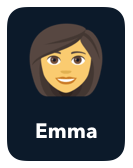
She works at ABC Co, a company in just the market you’re thinking of for your new file storage product or feature.
You tell her about it. She gets excited.
Because she’s getting excited, you get excited as well.
You turn around, and your team also gets excited.
Emma and you agree to reconnect 2 months from now when your product is ready. At this point, you’ll close the sale and your business will be ready for full-on sales.
Now…
Emma’s really nice. She’s your ex-colleague’s wife after all. She really wants to help, so she’s encouraging you with your idea.
The problem is…
- Emma doesn’t have purchasing authority;
- She’s also not responsible for data storage;
- She may be a VP, but she has no say over security and data management at ABC Co.
At ABC Co, the person responsible for security and data management is Mike. As the VP of a growing division, he has no time for this, so he delegates to Julie, his director of security. She makes all of the technical decisions.
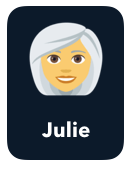
Now, Julie’s a great manager. Since her employees will be the ones using the product, she’ll want to get their take on any new product purchase. Especially since THEY HATE THE CURRENT SOLUTION.
Last year, Julie lost a good employee because of it. That’s still fresh on her mind.
If you manage to convince Julie and her team, you win.
Well… not quite… because, in an effort to reduce costs at ABC Co, the purchasing department gets to approve (or reject) all new technology purchases. And, in that team, Karl will try to slow down the purchase.
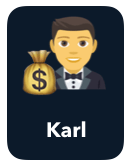
Karl’s wife works for a direct competitor of yours, but you won’t know that.
This is complex sale in one organization.
Now, unless you’re going for a market of one, which you shouldn’t do, you’ll need to find a way to sell the same product repeatedly at DEF Corp, where the VP of IT is responsible for all storage decisions and the company doesn’t have a purchasing department; at GHI Ltd where the CEO makes all purchase decisions, and at countless other businesses you might have never heard of.
In B2B, decision-making processes are complex. On average, 6.8 customer stakeholders are involved in purchase decisions (that’s actually up from 5.4 in 2014!).
You need to build deep relationships with several stakeholders and provide value to all of these stakeholders if you want your product to be purchased, used, and renewed.
There are a lot of things you’ll need to uncover, so you can deliver and sell value repeatedly and effectively in organizations.
Overwhelmed?
Don’t be.
It’s an iterative process.
Ready to get started?
Who Am I to Tell You All This?
I’m the author of Lean B2B: Build Products Businesses Want, a framework used by thousands of entrepreneurs and innovators around the world to find traction in the market.
It’s a proven process:
- Loopio in Toronto used Lean B2B to get from 0 to 10 customers. They now have more than 600 customers, and recently raised $11M in funding;
- NLR Aerospace in the Netherlands use the Lean B2B methodology to prioritize innovation projects across the organization;
- Verafin in Newfoundland, Canada has over 21 teams using the methodology to find and solve customer problems.
I’ve personally conducted over a thousand customer development interviews, for dozens of businesses and startups as a founder, employee or consultant.
I’m also a serial entrepreneur, having experienced first-hand the successes and failures of customer development (read: Getting Out of Recruitment — The Story of B2B Startup HireVoice).
Along the way, the ability to do effective customer development may be the most valuable skill I’ve learned.
Done right, it gives you the ability to find game-changing insights and create new value. It can help you close sales, delight customers, and sustainably differentiate an offering on the market.
How Customer Discovery Works
Let me introduce the Double Diamond design process created by the UK Design Council. I adapted it for customer development during the writing of Lean B2B:
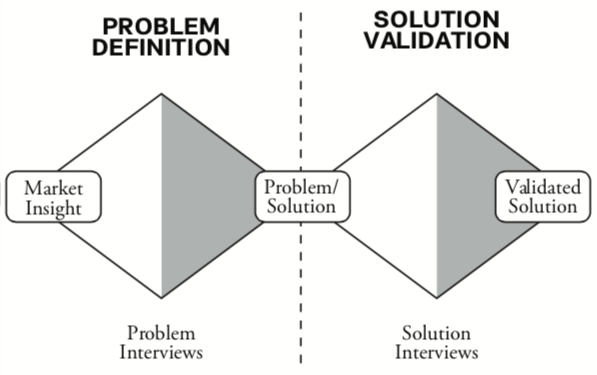
It has both divergent and convergent phases, exploration and confirmation phases, where you learn from prospects and validate learnings through testing until you reach clarity and predictability in your business.
This post is all about continuous customer discovery. To this end, we’ll focus on the first 2 steps.
Customer discovery is not just for startups. It’s also very effective for innovations, growing organizations, and established organizations hoping to refine their offering or market segmentation.
Interviews can be used to gather insights throughout the business lifecycle.
You should never be done learning about your market and customers.
In fact, if you think you’re done learning about your market and customers, you’ll become complacent and open the door to disruption, like some of these unfortunate companies did:
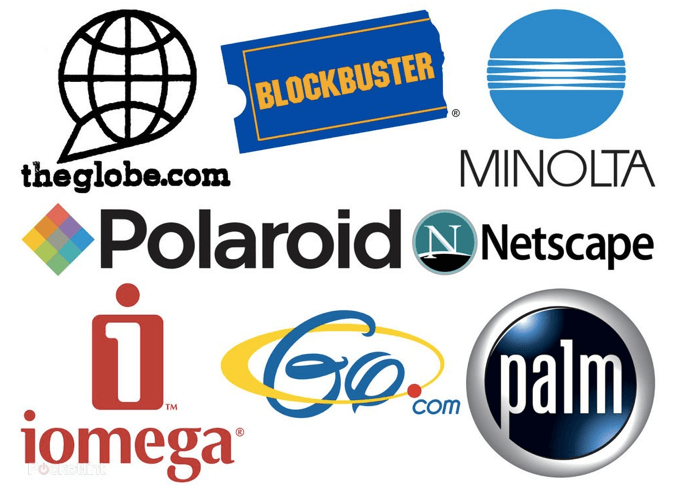
A good way to think about the customer discovery process is that it is like the process of polishing a precious stone or a diamond to make it ever-more effective and impactful.
A diamond is actually the drawing you see on the cover of Lean B2B:
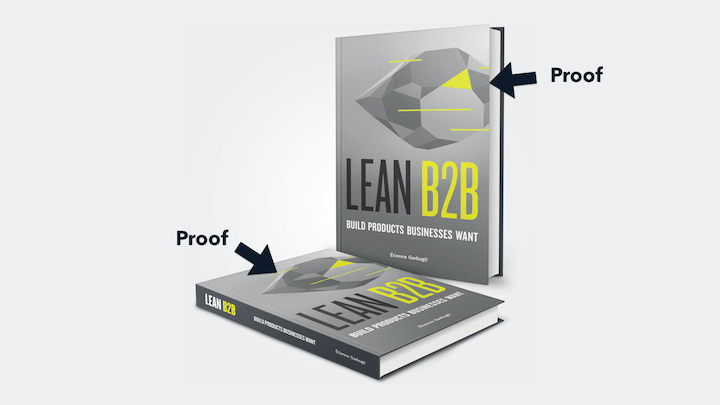
Getting Started with Customer Discovery
So, how do you actually get started?
To successfully bring new a innovation to market, a lot of things need to line up.
You need to find the right product for the right market, but also the right price point, business model, pitch, and acquisition channels in order to gain traction.
The challenge is that all of these variables are co-dependent, which is why entrepreneurs tend to talk in terms of fits:
- Product-market fit;
- Founder-market fit;
- Product-channel fit;
- Channel-business model fit.
I think you get the point.
The whole thing is a bit like a Rubik’s cube. By changing one part of the equation, you run the risk of breaking what you’ve already done on the other side.
This is why it’s so important to quickly find a fundamental truth for your innovation. A first validated assumption; something you can reliably build on in order to move forward and prioritize the next steps of your customer discovery program.
Although you can always pivot and change your assumptions as you move through the customer development process, some decisions will be much harder to revert than others.
Now, maybe the core assumption you start with is provided as part of the scope of your innovation:
- The target market is X;
- The buyer will be Y;
- The underlying technology will be W.
But… if that’s the case, you have to take those requirements with great caution.
Take a step back and ask yourself whether those are real fundamental truths, or your team’s assumptions disguised as truths.
At HireVoice, my previous startup, we made the mistake of starting with what we felt was a core problem (employee brand monitoring), when this “problem” was actually just a symptom of a bigger challenge (a company’s branding and recruitment efforts).
This, right away, sent our customer discovery and customer validation process in the wrong direction. It made us lose a lot of precious time and money; time and money we didn’t really have to start with.
Where to Start
So, where should you start?
I created the following model during the writing of Lean B2B to highlight that:
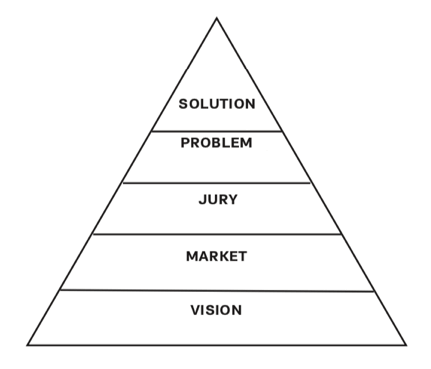
Your vision, as an innovator, is your foundation; what often unites and mobilizes your team. The market is the group of businesses you’re targeting; the industry and/or market segment.
The jury is the buyer group, the people you’re actually selling to. The problem is what your product ultimately needs to alleviate.
Finally, the solution is obviously your product.
The lower you go on the pyramid, the more certainty you need to have. These assumptions will be harder to change once you’re in the process of building your startup.
Now… many businesses start with a product idea or a solution.
They then try to find markets and customers for those solutions.
It’s not impossible (I’ve done it, you’ll see below) but, more often than not, that process takes a long time with no guarantee that it will lead to the discovery of a market.
Not all products have markets, unfortunately.
Starting with a problem, leads to similar issues.
Sure, you know what problem you’re trying to solve, but you then need to figure out who in the market experiences this problem most acutely.
Starting with a business problem is easier than starting with a solution, but it’s still not the most effective path for your business.
Starting with a problem might also mean missing out on much bigger and better opportunities.
Now, the better way to kickstart customer discovery for a startup or new innovation is to start with a market, building off driving assumptions, your vision, and learning from stakeholders.
With the Lean B2B methodology, the first hypotheses are around the market, not the problem; it’s important to focus on the humans behind businesses.
When you start with people, you’re much less likely to invent a problem and start with false assumptions.
Customer discovery is about people and understanding how to repeatedly create and deliver value for those people.
It’s important to learn how to find and recruit the right early adopters for your startup.
Get Started Fast – Download my Latest B2B Customer Interview Script for Free
How to Conduct Customer Discovery Interviews
When it comes to customer discovery, the first thing you need to understand is that interviews are not discussions.
You can’t evaluate the success of customer interviews the way you evaluate the success of discussions.
It’s not about being liked, having an enjoyable discussion, or leaving on a high note.
Customer development and customer discovery is “advocating for the business”, your business. It’s not something you do to makes customers happy.
To that end, the best interviews are 90% listening and 10% talking. You have to learn to stay quiet. This usually makes entrepreneurs feel uncomfortable, initially at least.
Asking “Good” Customer Interview Questions
You learn very little from closed questions like: “Do you like your job?”
Answer: Yes/No
90% of the learning will come from asking open questions like ‘Why’ or ‘How’, and by following up on emotion digging for the truth. Emotion is prioritization.
- What do you mean by that?
- Can you explain that a little more?
- Why do you say that?
- How do you feel about that?
- Sounds like there’s a story here, can you tell me more?
Early on, the most important thing you can do is listen and truly learn.
To make sure you do that, avoid mentioning your idea and don’t view customer discovery as a process to land customers.
If you do, it will create a needy vibe.
Go in searching for partners or industry and customer advisors.
Moving forward, you also need to realize that everyone lies.
- …because they don’t (yet) trust you;
- …they think you’re planning to compete against them;
- …the real answer doesn’t make them look good;
- …it’s not the perception they’re trying to create;
- …they’re being overly-optimistic.
As rules of thumb:
- Anything involving the future is an over-optimistic lie;
- The best predictor of future behaviour is current behavior;
- People will lie if they think it’s what you want to hear;
- If someone thinks your ego is on the line, they’ll give you mis-truths and compliments.
Always keep this in mind. You want to ground your innovation in truth and reality. This will be a lot easier if prospects feel comfortable and open up to you.
So, build relationships, make sure prospects understand you’re not planning to compete with their organization, and that everything they say will be kept confidential, and won’t be shared outside of your organization.
You need to overcome their defences to get to the truth.
It’s also easier to do face-to-face interviews because the prospects will be more focused.
When you’re on a call, there might be unexpected distractions, notifications popping up, colleagues showing up, emergencies, etc.
So you want to make sure you maintain your prospects’ attention the whole time through.
For this, it’s best to meet one person at a time. You want to learn about their personal pains, not their employer’s or their team’s.
Group interviews makes people defensive. It forces prospects to maintain a certain image in front of their colleagues, which often prevents prospects from truly opening up.
If you’re uncomfortable meeting with a high-ranked prospect (it happens), get them out of their office for lunch or coffee to even the odds.
A neutral location will make you feel more comfortable.
You can use our master list of B2B customer discovery questions to build your interview script.
Get Started Fast – Download my Latest B2B Customer Interview Script for Free
When to Stop Doing Customer Interviews
Through customer discovery, you’re looking for the existence of a market.
A market is a group of customers who share the same pain and will refer to one another for buying decisions.
So, you’re looking for:
- A number of potential customers;
- Sharing a pain, problem, or opportunity;
- In a talkative market, willing to share the solutions they use.
This means that a good problem-market hypothesis requires several businesses in one segment sharing the same pain.
If you haven’t found real problems and goals, go back to the drawing board. Book more interviews, get prospects to open up, follow emotions, and find their biggest pains.
If you only find 1 business with a key pain, try to figure out what makes this business unique and recruit more prospects like them to confirm the existence of a market. Don’t build for a single customer, they may be an outlier, and lead to the creation of a market of one.
If you find businesses with the same pains across different segments, home in on the most lucrative segment, refine your recruitment, and keep going.
This phase of customer development ends when you’ve found at least 5 businesses in the same segment that share a similar pain or problem.
Continuous Customer Discovery
Customer discovery is never done.
As customer development creator Steve Blank says, teams that build continuous customer discovery into their DNA become increasingly smart and adaptive to the ever-changing reality of the market.
Because customer discovery allows you to find the optimal setup for your current model, teams with continuous customer discovery processes tend to build more successful companies and increase their longevity.
You can explore all Lean Canvas hypotheses through series of customer interviews:
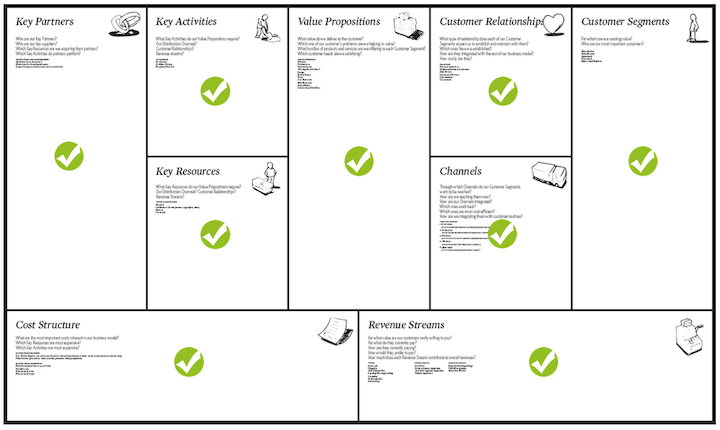
Customer Development: A Case Study

Following the publication of Lean B2B, I joined Psykler, a relationship profiling tool used during complex sales processes.
When I joined, the founder had already signed up customers in pharmaceuticals, aviation, and consulting. Usage was low. I would say the business hadn’t really found product-market fit.
We sat down and identified the 4 or 5 verticals where we felt Psykler could provide the most value: pharma, enterprise software, consulting, integrators.
We did a short series of customer interviews and realized that slow-moving industries, like healthcare, telcos, education and defence, were very hard to sell into.
Sales required strategic preparation. Teams had to run account development meetings… where Psykler would be very useful.
When customers were selling to large companies, there were many buyers; it forced complex sales and team selling with multiple salespeople working on the same deal.
In the service industry, long-term relationships and upsell are key. There’s a big reward if you understand the full organization you’re selling in.
We also realized that companies selling strategic IT services like business intelligence and security were forced to sell high to CIOs, CTOs, and VPs of Technology. This meant that there was a high cost of failure if those meetings didn’t go well.
Based on all the validation that we did, we realized that Psykler, in its current form, was best-suited for consulting firms in the security industry.
As we refined our pitch and understanding of the segment, the product really started to click with early adopters.
From there, we could improve the product and marketing to meet the needs of our segment.
This is a case where the business started with a defined product, and worked its way into figuring the best market for its product.
Your customer development skills will improve as you go through the process.
To make sure you’re truly learning and making progress, you have to be entirely clear as to what you know – your validated learning – and what you still need to validate – your hypotheses.
Keep polishing those diamonds, but keep in mind that…
Customer Discovery Isn’t Everything
There’s more to building products that businesses buy than customer discovery.
The Lean B2B Course will show you exactly how to reach product-market fit in B2B.
It goes way deep into:
- Finding early adopters;
- Building credibility in the market;
- Reaching decision-makers;
- Selecting the right interview questions;
- Defining a solution;
- Closing pre-sales;
- Building a minimum viable product;
- Evaluating product-market fit;
- How to apply the Lean Startup methodology in B2B;
- Etc.
Check it out, and thanks for reading!
More on Customer Discovery
- How to Use The Customer Discovery Process to Reduce Your Startup’s Risk
- How to Generate Valid Customer Insights From Customer Interviews (Complete Guide)
- The 4 Steps of the Lean B2B Customer Development Process
Download the First 4 Chapters Free
Learn the major differences between B2B and B2C customer development, how to think about business ideas, and how to assess a venture’s risk in this 70-page sampler.
Working on a B2B Startup?
Learn B2B customer development with our free email course:

